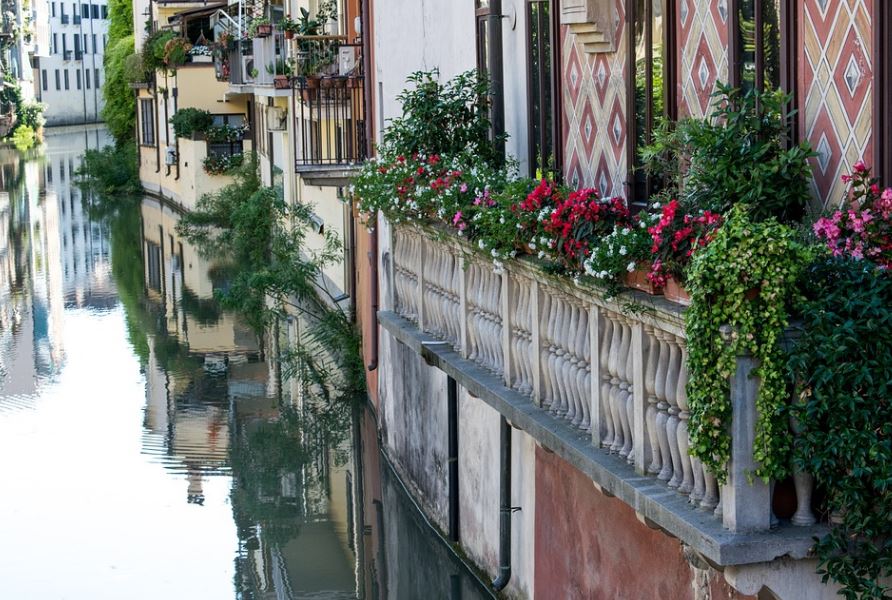Even in a small flat, it should be possible to cultivate plants. Apart from regular houseplants, various herbs, fruits, and vegetables can flourish in an apartment garden. As you develop your gardening talents, begin with a few containers. The availability of sunlight and the weight of your containers must be considered.
Despite the fact that some plants are more resilient and tolerant of novice gardeners than others, all plants have specific growing requirements that must be addressed.
Consider the following elements while selecting plants for your apartment garden:
1. Sunlight
The majority of flowering and fruiting plants require a full day of sunlight. That equates to six to eight hours of everyday direct sunlight. This can be difficult to find in an apartment, particularly in a city where tall buildings might obscure the sun for a portion of the day. Rooftops and balconies have the best possibility of receiving full sunlight. Choose plants that require less sunshine, such as certain salad greens and herbs, or use a grow lamp to simulate the sun’s rays if you’re gardening on a windowsill.
2. Soil
Plants obtain the water, oxygen, and nutrients that they need from the ground. Because your apartment garden will likely consist of containers, you cannot use regular garden soil because it would clump in pots, impeding oxygen access and water flow. Consequently, a potting mix with excellent drainage is important. The potting soil is airy and light, efficiently circulating oxygen and water to maintain healthy roots. And it is quite sterile, so you need not worry about introducing diseases or insects into your flat.
3. Water
Container plants require a great deal of water, frequently multiple times per day. Pick a spot for your container gardening that is within close proximity to a supply of water. Carrying watering cans can be tiresome, especially if you need to water multiple pots. Consider getting a hose that can be attached to a sink faucet if it works with your configuration. It is convenient when you need it and coils up when you don’t.
4. Wind
If your plants will be exposed to strong winds, such as on a rooftop or a balcony, your pots may require additional protection. Wind can rip through leaves and toss over top-heavy containers. Provide a wind block, such as a fence or screen. Or, ensure that your containers are sufficiently wide and heavy to anchor the plants.
5. Weight
Soil-filled containers are heavy to begin with, and their weight might triple when saturated with water. Ensure that your apartment’s garden placement can support the load. Window boxes must be fastened to the windowsill. Check with your landlord or building’s governing body on weight restrictions if you’re gardening on a balcony or roof.
Three Ways to Enjoy Nature in Your Apartment
1. Establish a window box garden
Due to the limited space, windowsill gardening typically requires growing little plants in small containers. This will inevitably impact the size of the plants you can cultivate. (Your windowsill is too small for a lemon tree!)
2. Construct a countertop
Even if your apartment faces north, you live in a daylight basement, or you have limited access to natural light, you can still grow food at home in a soil-free apartment garden. On countertops, many seeds and nuts can sprout and flourish. Seeds contain all the energy necessary for germination as well as cotyledons, the first genuine leaves that enable a plant to photosynthesize as it grows. Only water and air are required for seeds to sprout.
3. Develop a balcony garden
This is the most forgiving method of urban apartment gardening. When plants have access to natural light, air, and elements, their disposition and flavor tend to be more robust. Growing outside, especially in limited locations like a balcony, offers apartment dwellers a vast array of alternatives.
Plants to Grow in an Apartment
With sufficient space, light, water, and heat, any vegetable may be grown indoors. However, many huge crops are not worth the effort and area required to yield a respectable crop.
1. Lettuce
This is the easiest vegetable to cultivate indoors. As opposed to most other vegetables, lettuce can withstand less light, and you can choose a shade-tolerant variety that grows well inside. It belongs to the Aster family; hence it is linked to daisies.
Unfortunately, lettuce is also extremely inexpensive at grocery stores. It may not be worthwhile to devote a portion of your apartment to growing lettuce given its accessibility.
2. Spinach
Spinach is a leafy green belonging to the Amaranth family. This is a flowering plant family; hence spinach must be prevented from blossoming in order for its leaves to be harvested. There are numerous spinach kinds, so it is simple to pick one that is ideal for indoor cultivation.
3. Carrots
Both carrots and parsley are simple to cultivate and manage. Carrots require well-drained, loose soil that is at least 6 inches deep.
Carrots can thrive inside as long as they receive ample direct light and airflow. Incorporate them with other veggies in a soil-based grow bed.
4. Onions/Garlic
Garlic is a bulb, whereas onions are stems, yet both are members of the Allium family and have comparable development requirements as other root crops. As long as their growing medium is well-drained, these plants are often pest-free.
While onions and garlic are readily available at grocery stores, their pungent odor will deter pests from other veggies, making them multipurpose. To deter pests, combine them with other vegetables in a soil-based grow bed.
5. Herbs
Herbs are straightforward. In fact, you may already have basil, thyme, or chives growing indoors. Only a sunny window sill and minimal work are required. Additionally, you can use mint, ginger, rosemary, and cilantro.
6. Peppers
As long as your flat has a sunny location with temperatures of 75 degrees or higher, you can plant peppers. Cherry and banana peppers have a reputation for thriving indoors.
7. Mushrooms
Mushrooms are an excellent option for growing indoors because of their substantial texture. Many species are suited for this use. They can even be grown in a laundry basket.
8. Avocados
To plant an avocado, all you need is an avocado. Save the large, spherical pit in the center of the avocado you purchased at the supermarket once you’ve finished eating it. Rinse the pit, then insert four toothpicks into its base and suspend it over a glass of water, with the bottom in the water and the tip above it.
Place the glass on a well-lit windowsill and ensure that the water level is maintained. In a few weeks, roots will emerge from the seedling, and it will be ready to be placed in soil. Once the seed has been planted, leave the container in a sunny location and water it softly but frequently.
9. Lemons
Small lemon trees not only look and smell lovely as houseplants, but they also yield juicy fruits that can be used in salads, added to hot tea, etc. As long as you provide sufficient light (at least 8 to 12 hours of sunlight per day) and place the tree in a moist area, you’re off to a good start with citrus plants.
To summarize
Apartment gardening involves planting fruits and vegetables in spaces adjacent to the apartment. Perhaps the flat’s sunny windows, patio, or even balcony, apartment gardening is possible. Again, avoid underestimating your minimum fire exit space, as it can be the deciding factor in apartment gardening success.
Furthermore, when it comes to apartment gardening, space is irrelevant. Utilizing the available area intelligently is the key to developing effective gardens. Invest in accurate information on the necessary instruments, viable veggies, and conditions conducive to plant growth.







